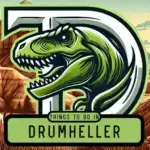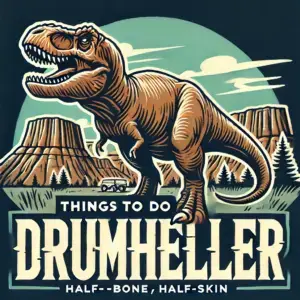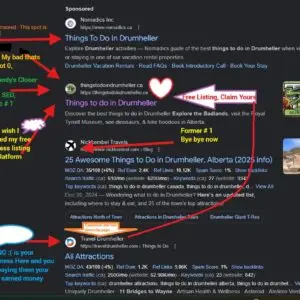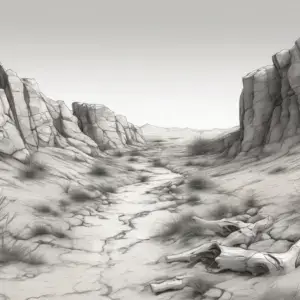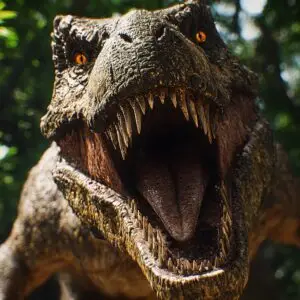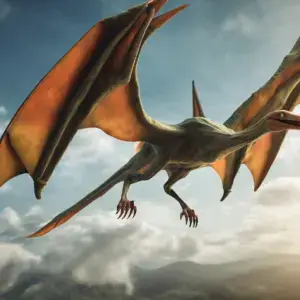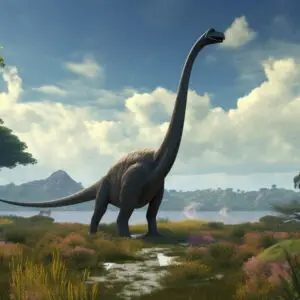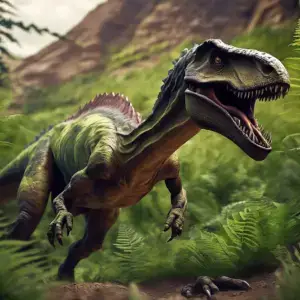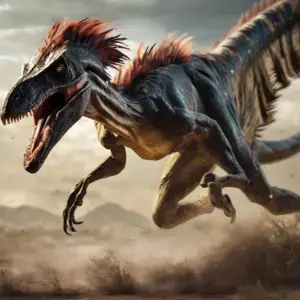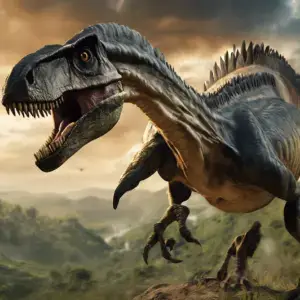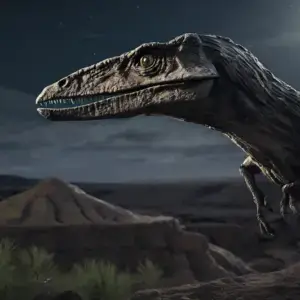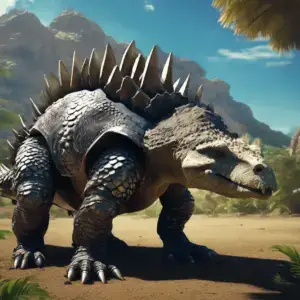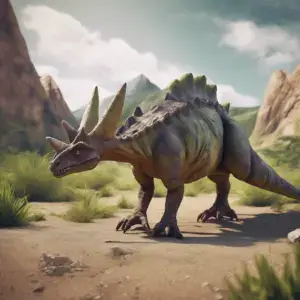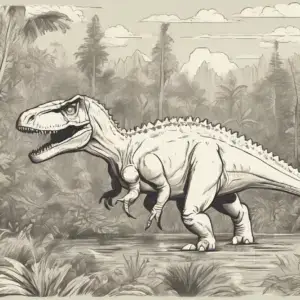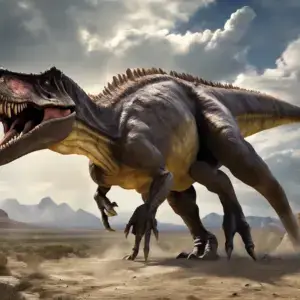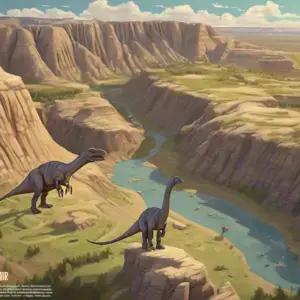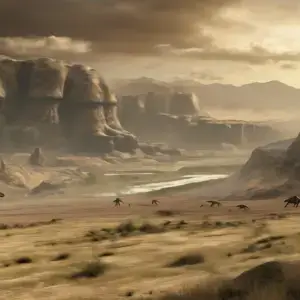Top 5 Hidden Fossil Sites You Can Actually Visit Around Drumheller
September 16, 2025
12 min read
 Discover where you can legally hunt for fossils in Drumheller’s world-famous Badlands
Discover where you can legally hunt for fossils in Drumheller’s world-famous BadlandsBeyond Museum Glass – Real Fossil Adventures Await
Sure, the Royal Tyrrell Museum showcases world-class dinosaur specimens behind protective glass, but what if we told you that Drumheller’s Badlands are still giving up their prehistoric secrets? What if you could walk the same ground where Joseph Tyrrell made his legendary 1884 Albertosaurus discovery, or legally pocket your own 70-million-year-old fossil fragment?
Welcome to Drumheller’s hidden fossil hunting scene – where adventure meets paleontology, and where your next family vacation could literally unearth history.
While most visitors stick to the museum circuit, savvy fossil enthusiasts know that Drumheller’s real magic happens outdoors, in the wind-carved coulees and exposed rock faces where time itself lies scattered across the landscape. These aren’t just pretty hiking spots – they’re active fossil sites where amateur paleontologists regularly make legitimate discoveries.
🦕 Quick Fossil Hunting Facts
- Legal Status: Surface collecting permitted for personal use
- Best Season: Late spring through early fall
- Skill Level: Beginner to advanced options available
- Success Rate: Nearly 100% for marine fossils at recommended sites
But here’s the catch: not all fossil sites are created equal, and definitely not all are legal to explore. That’s where this guide comes in. We’ve mapped out the top 5 accessible, legal, and genuinely productive fossil hunting locations around Drumheller where you can channel your inner paleontologist without breaking any laws or damaging precious scientific resources.
From the historic site where Canada’s dinosaur rush began to modern-day fossil beds where families regularly find marine fossils and plant impressions, these locations offer authentic fossil hunting experiences that’ll make your Drumheller visit unforgettable.
Ready to trade museum gift shop souvenirs for the real deal? Let’s dig in.
The Top 5 Hidden Fossil Sites Around Drumheller
#5: Midland Provincial Park – The Family-Friendly Fossil Gateway
What Makes It Special: Perfect introduction to fossil hunting with guaranteed finds and zero legal complications.
Location: 15 minutes northwest of Drumheller, adjacent to the Royal Tyrrell Museum
What You’ll Find: Marine fossils, plant impressions, invertebrate specimens from the Bearpaw Formation
Midland Provincial Park serves as Drumheller’s perfect fossil hunting training ground. While it might not yield the next T-Rex skeleton, this accessible site practically guarantees fossil finds for beginners and families.
The park’s exposed Bearpaw Formation dates back 70 million years, when this area lay beneath the Western Interior Seaway – a massive inland sea that split North America in half. Today, those ancient sea floors are your fossil hunting playground.
The Fossil Hunting Experience:
Walk the park’s interpretive trails, and you’ll quickly spot dark, fossilized shells embedded in the grey shale. Ammonites – spiral-shelled marine creatures related to modern squid – are the stars here. These ancient cephalopods come in sizes ranging from coin-sized specimens to dinner plate giants.
But ammonites aren’t your only targets. Sharp-eyed hunters regularly uncover:
- Baculites: Straight-shelled relatives of ammonites that look like fossilized ice cream cones
- Inoceramus: Giant clam shells that can span your hand
- Plant fossils: Leaf impressions from ancient ferns and conifers
- Fish scales and bones: Remnants of prehistoric marine life
🔍 Pro Hunting Tips:
- Visit after rain when fossils are freshly exposed and easier to spot
- Bring a small brush to clean specimens without damaging them
- Focus on loose material – never chip fossils from solid rock faces
- The trail’s first kilometer offers the richest fossil concentrations
Legal Status: Completely legal for personal collection. The park encourages fossil hunting as an educational activity, with interpretive signs explaining what you’re finding.
Family Factor: This site shines for kids aged 6-12. The guaranteed finds keep young fossil hunters engaged, while the short hiking distances prevent meltdowns. Plus, the adjacent Tyrrell Museum offers perfect rainy-day backup plans.
Best Time to Visit: Late spring through early fall. Winter access is possible but challenging due to snow and ice.
#4: East Coulee Suspension Bridge Area – The Scenic Fossil Hunt
What Makes It Special: Combines stunning Badlands photography with productive fossil hunting in a historic coal mining setting.
Location: East Coulee, 20 minutes southeast of Drumheller via Highway 10
What You’ll Find: Coal-age plant fossils, marine specimens, and occasional vertebrate fragments
The East Coulee area offers fossil hunting with a side of Instagram-worthy scenery. This historic coal mining community sits in a dramatic river valley where multiple geological formations create diverse fossil hunting opportunities.
The star attraction here isn’t just the fossils – it’s the setting. The historic suspension bridge, built in 1931, spans the Red Deer River and provides access to fossil-rich exposures on both sides of the valley.
The Fossil Hunting Experience:
Start your hunt near the East Coulee School Museum, then work your way toward the river. The area’s coal mining history means you’re walking through multiple time periods – from 70-million-year-old marine deposits to 50-million-year-old coal seams.
Target Fossils:
- Leaf impressions: Beautifully preserved fern fronds and conifer needles from ancient swamp forests
- Coal balls: Rounded concretions containing compressed plant material
- Marine shells: Leftover from when seas periodically flooded the coal swamps
- Petrified wood: Silicified tree trunks and branches
- Rare vertebrate finds: Occasional crocodile teeth or turtle shell fragments
The Coal Connection:
What makes East Coulee unique is its coal mining heritage. The same geological processes that created Drumheller’s coal seams also preserved incredible plant fossils. You’re literally walking through ancient forests that became the coal that built this community.
Photography Bonus: Even if fossil hunting isn’t your thing, East Coulee delivers spectacular Badlands photography. The suspension bridge, abandoned mine structures, and dramatic valley views create perfect backdrops for your Drumheller adventure photos.
🔍 Pro Hunting Tips:
- Explore both sides of the river – the north bank often produces better plant fossils
- Check the base of eroded slopes where fossils naturally accumulate
- Bring a camera to document your finds in their original context
- Respect private property – stick to public areas and marked trails
Legal Status: Fossil collecting is permitted in designated public areas. Avoid private property and active mining claims.
Access Notes: The suspension bridge itself is a tourist attraction, so expect other visitors. Early morning or late afternoon visits offer the best combination of good lighting and fewer crowds.
#3: Horsethief Canyon – The Hidden Gem with Vertebrate Potential
What Makes It Special: Off-the-beaten-path location with diverse geological exposures and potential for significant vertebrate discoveries.
Location: 15 kilometers southwest of Drumheller, accessed via secondary roads
What You’ll Find: Marine fossils, plant material, and the tantalizing possibility of dinosaur bone fragments
Horsethief Canyon represents Drumheller fossil hunting’s best-kept secret. While Horseshoe Canyon gets all the tourist attention, Horsethief offers similar geological diversity with a fraction of the crowds.
This dramatic canyon cuts through multiple rock formations, creating a geological layer cake that spans millions of years. Unlike more popular sites, Horsethief Canyon still feels wild and unexplored – because in many ways, it is.
The Fossil Hunting Experience:
Horsethief Canyon requires more hiking and geological knowledge than other sites on this list, but the rewards justify the effort. The canyon’s multiple rock layers mean you’re essentially time traveling as you explore different elevations.
Target Formations and Fossils:
- Bearpaw Formation (canyon bottom): Marine fossils including ammonites, clams, and shark teeth
- Horseshoe Canyon Formation (mid-levels): Plant fossils and potential dinosaur bone fragments
- Battle Formation (upper levels): Marine shells and fish remains
🦴 The Vertebrate Possibility:
Here’s what makes Horsethief Canyon special for serious fossil hunters: it exposes the same rock formations that have produced major dinosaur discoveries elsewhere in the region. While you’re unlikely to stumble across a complete skeleton, vertebrate fragments – pieces of dinosaur bone, teeth, or scales – are genuine possibilities.
Recent Amateur Discoveries:
Local fossil hunting groups have reported finding:
- Hadrosaur (duck-billed dinosaur) bone fragments
- Crocodile teeth and scutes (armor plates)
- Turtle shell pieces
- Fish vertebrae and scales
- Exceptional plant fossil preservation
Navigation and Safety:
Horsethief Canyon is more remote than other sites on this list. GPS coordinates are essential, and cell phone coverage can be spotty. The canyon involves moderate hiking with some scrambling over loose rock.
Pro Hunting Tips:
- Bring plenty of water and sun protection
- Focus on freshly eroded areas after spring runoff
- Document any significant finds with photos and GPS coordinates
- Consider joining organized fossil hunting groups for safety and expertise
Legal Status: Collecting is permitted for personal use, but significant vertebrate finds should be reported to the Royal Tyrrell Museum.
Best Time to Visit: Late spring through early fall. Avoid during wet weather when canyon access becomes treacherous.
#2: Willow Creek Hoodoos Area – The Geological Wonderland
What Makes It Special: Combines iconic Badlands scenery with excellent fossil hunting opportunities in easily accessible terrain.
Location: 20 minutes east of Drumheller via Highway 10, then south on Range Road 204
What You’ll Find: Diverse marine fossils, exceptional preservation, and some of Drumheller’s most photogenic landscapes
The Willow Creek Hoodoos represent Drumheller’s geological artistry at its finest. These towering sandstone pillars, carved by millions of years of wind and water, create a surreal landscape that feels more like Mars than Alberta.
But beyond their Instagram appeal, the hoodoos area offers some of Drumheller’s most productive and diverse fossil hunting. The same erosional processes that created these geological sculptures continuously expose fresh fossil material.
The Fossil Hunting Experience:
The hoodoos area spans multiple geological formations, creating diverse fossil hunting opportunities within a relatively small area. Unlike single-formation sites, you can hunt for marine fossils, plant material, and even vertebrate remains all in one visit.
Target Fossils by Formation:
- Milk River Formation: Shark teeth, ray plates, marine reptile bones
- Pakowki Formation: Ammonites, clams, marine snails
- Lea Park Formation: Fish scales, plant debris, occasional vertebrate fragments
The Hoodoo Advantage:
What makes this site special is how the hoodoos themselves act as natural fossil concentrators. As these sandstone pillars erode, fossils embedded in their structure fall to the base, creating natural collection areas where specimens accumulate over time.
Indigenous Connection:
The Willow Creek Hoodoos hold special significance in Blackfoot and Cree traditions. These formations were considered sacred sites where “grandfathers of the bison” – fossil remains – could be found. This cultural connection adds depth to your fossil hunting experience, connecting you to thousands of years of human interaction with these ancient landscapes.
Photography and Fossil Hunting Combined: The hoodoos area offers unique opportunities to combine fossil hunting with landscape photography. The dramatic lighting during golden hour creates perfect conditions for documenting both your fossil finds and the spectacular scenery.
Pro Hunting Tips:
- Explore the bases of individual hoodoos where erosion concentrates fossils
- Look for color contrasts – fossils often appear darker than surrounding rock
- Bring a GPS unit to mark productive spots for return visits
- Respect Indigenous cultural significance – collect responsibly and with reverence
Legal Status: Fossil collecting permitted for personal use. The area is protected as a natural landmark, so minimize impact and pack out all trash.
Access and Amenities: Well-maintained gravel roads provide easy access. Picnic tables and interpretive signs make this site family-friendly, while the diverse fossil hunting opportunities satisfy serious collectors.
#1: Joseph Tyrrell’s Original Discovery Site – Where Canada’s Dinosaur Rush Began
What Makes It Special: The actual location where Joseph Burr Tyrrell discovered the Albertosaurus skull that launched Canada’s paleontological fame.
Location: Along the Red Deer River, approximately 8 kilometers northwest of Drumheller (specific coordinates available through guided tours)
What You’ll Find: The same geological formations that produced Tyrrell’s famous discovery, with ongoing potential for significant finds
Standing at Joseph Tyrrell’s original discovery site isn’t just fossil hunting – it’s paleontological pilgrimage. This unassuming riverbank location represents ground zero for Canada’s dinosaur discoveries, the spot where a geologist’s curiosity changed our understanding of prehistoric life forever.
On June 12, 1884, Joseph Burr Tyrrell was conducting a geological survey for the Geological Survey of Canada when he spotted something unusual eroding from the riverbank. That “something” turned out to be a 70-million-year-old Albertosaurus skull – the first major dinosaur discovery in Canada and the find that put Alberta on the global paleontological map.
The Historical Significance:
Tyrrell’s discovery triggered what paleontologists now call Canada’s “dinosaur rush.” Within decades, fossil hunters from around the world descended on the Badlands, leading to discoveries that filled museums globally and established the region as one of Earth’s premier dinosaur fossil sites.
The Fossil Hunting Experience:
What makes this site extraordinary isn’t just its history – it’s the ongoing potential. The same geological processes that exposed Tyrrell’s Albertosaurus continue today. Every spring flood, every winter freeze-thaw cycle, every windstorm potentially exposes new fossil material from the same formations.
Target Fossils:
- Dinosaur bone fragments: Pieces of hadrosaurs, ceratopsians, and theropods
- Teeth: Isolated dinosaur teeth from various species
- Plant fossils: Leaves, seeds, and wood from Cretaceous forests
- Marine fossils: Shells and invertebrates from periodic sea incursions
- Vertebrate microfossils: Tiny bones and teeth requiring careful searching
The Geological Context:
Tyrrell’s discovery came from the Horseshoe Canyon Formation, a rock unit that spans roughly 71-67 million years ago. This formation represents the end of the dinosaur era, making any finds here particularly significant for understanding the final chapter of dinosaur evolution.
Modern Discoveries:
Amateur fossil hunters continue making significant finds near Tyrrell’s original site:
- 2019: Local collector found partial hadrosaur jaw
- 2021: Guided tour participant discovered rare theropod tooth
- 2023: Family fossil hunting trip uncovered articulated turtle shell
The Guided Tour Advantage:
While the general area is accessible to independent fossil hunters, the exact coordinates of Tyrrell’s discovery are best accessed through specialized guided tours. These tours combine historical interpretation with hands-on fossil hunting, led by experts who know the site’s productive areas and can help identify significant finds.
Pro Hunting Tips:
- Focus on freshly eroded areas along the riverbank
- Bring a small screen for sifting through loose sediment
- Document any vertebrate finds with detailed photos and GPS coordinates
- Consider the seasonal timing – spring erosion often exposes fresh material
Legal and Ethical Considerations:
This site requires special attention to legal and ethical fossil collecting:
- Significant vertebrate finds should be reported to the Royal Tyrrell Museum
- Collect only loose material – never excavate embedded specimens
- Respect the site’s historical significance
- Follow Leave No Trace principles
Access Information: The site requires moderate hiking along river trails. Spring and fall offer the best combination of comfortable weather and fresh fossil exposures. Summer visits are possible but require early morning starts to avoid heat.
The Tyrrell Legacy:
Standing where Tyrrell made his discovery connects you to a moment that changed paleontology forever. His find didn’t just put one skull in a museum – it launched a scientific revolution that continues today. Every fossil you find here contributes to that ongoing story of discovery.
Legal Guidelines and Responsible Fossil Hunting
Before you grab your rock hammer and head for the Badlands, understanding Alberta’s fossil collecting laws isn’t just important – it’s essential for preserving these incredible sites for future generations.
✅ What’s Legal:
- Collecting loose fossils for personal use
- Surface collecting without excavation tools
- Keeping common invertebrate fossils (ammonites, clams, etc.)
- Photographing and documenting finds
📋 What Requires Permits:
- Any excavation beyond surface collecting
- Commercial fossil collecting
- Collecting on private property (requires landowner permission)
- Scientific collecting for research purposes
🚫 What’s Prohibited:
- Collecting vertebrate fossils without proper permits
- Using power tools or explosives
- Collecting in provincial parks without permission
- Selling fossils collected on public land
🦴 The Vertebrate Rule:
Here’s the big one: any dinosaur bones, teeth, or other vertebrate fossils legally belong to the Province of Alberta. If you find something significant, you’re required to report it to the Royal Tyrrell Museum. This isn’t about getting in trouble – it’s about ensuring important scientific discoveries get proper study and preservation.
🌟 Best Practices:
- Always collect responsibly – take only what you need
- Document finds with photos and GPS coordinates
- Never use hammers or chisels on solid rock faces
- Leave sites better than you found them
- Share knowledge with other fossil hunters
- Support local paleontological research
Essential Fossil Hunting Gear
Success in fossil hunting often comes down to having the right tools. Here’s your essential kit for Drumheller’s fossil sites:
🎒 Basic Equipment:
- Small backpack: For carrying finds and supplies
- Water bottles: Alberta sun can be intense
- Sun hat and sunscreen: Essential Badlands protection
- Sturdy hiking boots: Rocky terrain demands good footwear
- First aid kit: Basic safety precautions
🔨 Fossil Hunting Tools:
- Small brush: For cleaning specimens
- Magnifying glass: Spot tiny fossils and details
- Small containers: Protect delicate finds
- Newspaper/bubble wrap: Wrap fragile specimens
- GPS device or smartphone: Mark productive locations
- Camera: Document finds in context
- Small screen/sieve: For microfossil hunting
Important: Leave rock hammers and chisels at home unless you have proper permits. Surface collecting with hand tools only is the rule for recreational fossil hunting.
Best Times for Fossil Hunting in Drumheller
🌸 Spring (April-May):
Pros: Spring runoff exposes fresh fossils, comfortable temperatures, fewer crowds
Cons: Muddy conditions, unpredictable weather
Best for: Serious collectors looking for newly exposed specimens
☀️ Summer (June-August):
Pros: Stable weather, long daylight hours, all sites accessible
Cons: Hot temperatures, peak tourist season, crowded sites
Best for: Family fossil hunting, combining with other Drumheller activities
🍂 Fall (September-October):
Pros: Perfect temperatures, stunning scenery, fewer tourists
Cons: Shorter days, potential for early snow
Best for: Photography combined with fossil hunting
Ready to Start Your Fossil Hunting Adventure?
Drumheller’s fossil sites offer something for everyone – from guaranteed family finds to the possibility of significant scientific discoveries. Whether you’re channeling your inner paleontologist or just looking for a unique Badlands experience, these five sites provide authentic fossil hunting opportunities you won’t find anywhere else in Canada.
🏪 Support Local Fossil Hunting
Planning your fossil hunting adventure? These local Drumheller businesses can help:
- Fossil hunting tours: Professional guides who know the best sites
- Rock shops: Tools, books, and fossil identification guides
- Outdoor gear stores: Essential equipment for Badlands exploration
Browse our local business directory to find fossil hunting resources and support Drumheller’s economy.
Continue Your Drumheller Adventure
Complete Guide to the Royal Tyrrell Museum
Explore the world’s premier paleontology museum
Horseshoe Canyon: Your Complete Guide
Discover Drumheller’s most photographed landscape
How to Spend a Day in Drumheller
Perfect itinerary for your Badlands adventure

